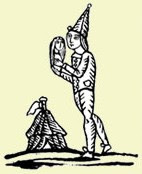
This book was bought for me by a friend as a present, and then recommended by another friend who had read it for her book group. I thought it was a novel until I started to read it and realised it was a work of non-fiction.
The book tells the story of a widely publicized murder in 1860, that had the whole country talking and went on to influence some of our most well known Victorian novellists.
A 3 year old boy is found with his throat cut and stuffed down the outside privy of a well to do country house. The boy is Saville Kent, son of the owner Samuel Kent, and the police are baffled. Did someone break in, snatch the boy from his bed and murder him? What kind of a grudge would cause such an action? Or were there secrets behind the mansions closed doors? Could it possibly be a member of the family? With the Constabulary in its infancy and only a handful of detectives in the country, the local magistrates call for one of Londons finest, Mr Whicher, to solve the case. It is this character, the all seeing detective, and the circumstances of the case, that influenced some of the later works of Charles Dickens (who knew Whicher), Wilkie Collins and Henry James.
Kate Summerscale has written a very thorough account of the crime, with the benefits of hindsight and with the advances in technology and knowledge, we are provided with a well rounded story that had the Victorians stumped. The author uses the official documents of the day alongside private memoirs and newspaper articles from the 1860's, and well into the 1940's. The mystery continues over decades.
I found this a fascinating read from the start, and for such an influential event, I wondered why I had never heard about it. Although the pace flagged a little in the middle, the book kept me interested as each intricate chapter of this complicated case was played out. I particularly enjoyed the history of the police and the descriptions of early techniques of detection. This includes the origins of terminology we use today, like 'clue' and 'denoument'. Also the reactions of the public, to the crime itself and the class arguments it brought to the surface, and the dislike of detectives, spying on people and their private lives. It is surprising how rudimentary their resources were when investigating. After watching the likes of CSI and Silent Witness on TV, I found myself really surprised at how little they had to go on besides gut instinct and one or two pieces of evidence.
I really enjoyed this book and recommend it for anyone with an interest in Victorian England, true life crimes or early crime novels of the 19th century. It would also be a good choice for book groups and some discussion questions about The Suspicions of Mr Whicher can be found by clicking the link.
























2 comments:
Sounds great! I have this on my TBR list and now I'm really looking forward to reading it. Truth is that I thought it was a novel, too. Can't believe that even after I read some reviews for it, I had not inkling that they were discussing a non-fiction text.
Hi Nadia, I hope you enjoy it as I did when you come to read it. I'll look out for your review.
Post a Comment